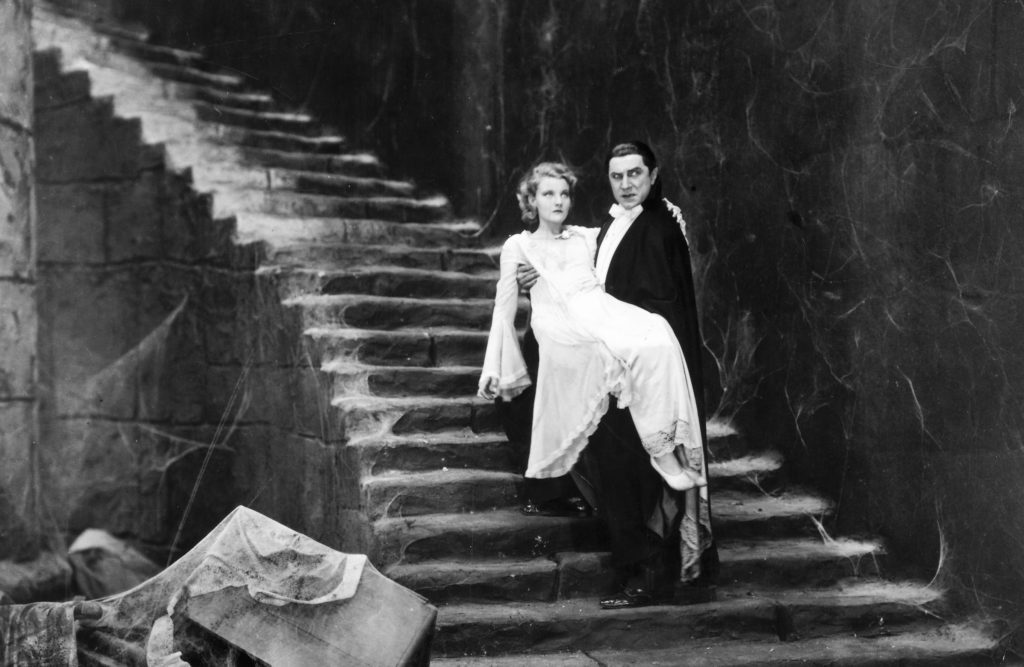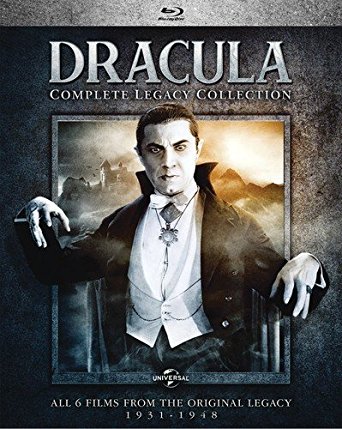
Dracula’s Bite
Regulars on the Crash Palace Productions web site and blog already should know the basic premise of the duo Angel Ackerman and Eva Parry—we’re a mother/daughter team reviewing horror movies that my almost-fourteen-year-old otherwise would not watch. The movies we’ve reviewed chronicle pretty much all of her horror feature experience, though she is a fan of television’s Buffy the Vampire Slayer.
As a responsible parent, I’ve presented a logical approach to some in-my-opinion horror canon, blending a chronological approach with some contemporary works designed to appeal to her interests. Today we tackle the 1931 English-language version of Dracula, directed by Tod Browning, colloquially and lovingly referred to as “Bela Lugosi’s Dracula.”
Now, Eva watched 1922’s silent Nosferatu. That film exposed her to horror without speech and in black-and-white. One of her responses to that film was to note that the black and white removed her from reality so it diluted the fear factor for her. In that film and in this one, I pointed out how the vampire never bites anyone because the censors wouldn’t allow that— a concept which she had to digest for a minute— and then we discussed how we really didn’t need to see that moment.
Eva immediately noticed an improvement in both the acting and the cinematography over Nosferatu. She considered Dracula much more modern. Although I have probably seen this film twenty times, viewing it with her I noticed with virgin eyes Browning’s stunning use of volume. Not only does he make Renfield seem amazingly small in the Transylvania castle, he repeats that sense of size and insignificance with Dracula, Mina, and Renfield in the dramatic end sequence in the stairwell at Carfax Abbey. That particular denouement has always given me a special chill.
Believe it or not, my favorite actor in Dracula is and always has been Dwight Frye as Renfield. His clean-cut professional demeanor as he opens the film is a perfect juxtaposition to the demise of his sanity that starts with the voyage on the Vesta, continues with the obsession with flies at the sanatarium, and turns the blood cold as he begs for his life in the ending referenced above. Plus, the guy can giggle in such a way that you’re afraid to look over your shoulder.
What surprised me most, as this was my first viewing in probably a decade, was how Lugosi really does nail the creepy gentleman aspect of the character. Eva agreed and thought the delivery of his lines contributed to that sense. I thought, now that I have matured, that Lugosi would seem cornier, but he does not. Therefore, I found myself quite disappointed that when you really examine it, Dracula does not have much screen time in his movie. I have heard feminist academics say it before, and this film really demonstrates it to me, that Dracula is the story of trying to tame and save women who misbehave. Lucy’s demise, Mina’s seduction to the dark side and how she manipulates everyone when she is under the Count’s thrall, their behavior and the male responses to it clearly support the idea that women are wanton and naughty and must be protected.
And Eva? She shared some of my impressions that I had at her age, like “those bats are so paper” and “I like Dracula. He’s cool.” But she also has her own insights. When she first saw Dracula’s brides extend their hands from their coffins she compared it to how our blind friend searches for and looks at things with her fingers. She labeled the women’s screams fake and “siren-like.” Overall, she said she loved the movie, though at times it did seem long.
So a win! for Bela Lugosi.

The Plot Sickens: Get more from Angel Ackerman and Eva Parry by checking out their review of Nosferatu!
Crash Palace Support Team
 Angel Ackerman and Eva Parry
Angel Ackerman and Eva Parry
After a fifteen-year career in print journalism, Angel Ackerman has studied world history, (specifically post-colonial Francophone Africa, Muslim relations, and contemporary Western politics) and traveled several continents. Her recent publications include the poem This Paris in StepAway magazine, an essay on the weather and travel on the Horn of Africa in Rum Punch Press, academic encyclopedia entries on Djibouti, a review in Global Studies South on a book examining famine in Somalia, book reviews from eons ago for Hippocampus Magazine and an upcoming essay on chickens. Follow her on Twitter.
Eva Parry will enter high school this fall but has already spent a season in the low brass section of the marching band carrying a sousaphone. When not irritating her mother by piling as many clothes and candy wrappers as possible on her bedroom floor, she explores various writing forms and antagonizes her cats. She has known Billy Crash most of her life and never stops making noise or talking, which once resulted in her missing a catch and taking a Frisbee in the mouth.
(Still photo from Dracula via TCM.)
